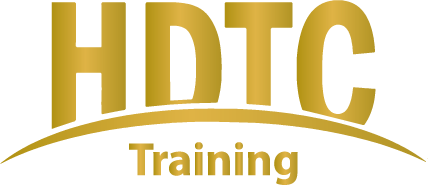Certified Internet of Things IoT Practitioner CIoTP
The Internet of Things (IoT) enables massive data collection and analysis, enabling well-informed decisions to be made quickly. However, the deluge of data handled by IoT systems is often acquired, processed, and presented using new technologies that are rapidly evolving and, in some cases, being rushed to market, creating new concerns for data privacy and cybersecurity.
This course presents an approach for managing IoT security and data privacy throughout the entire lifecycle. Through a combination of hands-on activities and case studies, you will learn how to identify and remediate vulnerabilities that undermine IoT security, as well as strategies for managing risk, securing data throughout its entire lifecycle, protecting data privacy, ensuring that IoT resources can be accessed only by authorized users, managing risks related to device firmware and software, and protecting IoT devices from direct physical and network access.
Course Info
In this course, you will identify, assess, respond to, and protect against security threats and operate a system and network security analysis platform. You will:
- Assess cybersecurity risks to the organization.
- Analyze the threat landscape.
- Analyze various reconnaissance threats to computing and network environments.
- Analyze various attacks on computing and network environments.
- Analyze various post-attack techniques.
- Assess the organization's security posture through auditing, vulnerability management, and
- penetration testing.
- Collect cybersecurity intelligence from various network-based and host-based sources.
- Analyze log data to reveal evidence of threats and incidents.
- Perform active asset and network analysis to detect incidents.
- Respond to cybersecurity incidents using containment, mitigation, and recovery tactics.
- Investigate cybersecurity incidents using forensic analysis techniques.
Lesson 1: Managing IoT Risks
Topic A: Map the IoT Attack Surface:
- Case Study: Connected Services Company
- The IoT Ecosystem
- The IoT Attack Surface
- Shadow IT
- IoT Risk Management
- Security Versus Risk
- Guidelines for Identifying Threats to IoT
- Identifying Strategies to Deal with IoT Threats
Topic B: Build-in Security by Design
- Security by Design
- Guidelines for Implementing Security by Design
- Building Security into IoT Systems
Lesson 2: Securing Web and Cloud Interfaces
Topic A: Identify Threats to IoT Web and Cloud Interfaces
- Web Protocols
- H2M Interfaces
- M2M Interfaces
- The Request/Response Model
- Send Data with a Request
- Asynchronous HTTP
- Data Serialization
- Common Attack Patterns
- Guidelines for Protecting Against Threats to IoT Web-Based User Interfaces
- Identifying Threats to IoT Web and Cloud Interfaces
Topic B: Prevent Injection Flaws
- Injection Flaws
- SQL Injection
- Consequences of a SQL Injection Attack
- Second-order SQL Injection
- LDAP Injection
- Shell Attack
- Reverse Shell
- URL-Based Attacks
- Malformed URL Attack
- Insecure Direct Object References
- Setting Up an Account
- Exploiting Injection Flaws
- Guidelines for Preventing Injection Flaws
- Preventing Injection Flaws
Topic C: Prevent Session Management Flaws
- Session Tokens
- Token Management
- Session Management
- Session Replay
- Man-in-the-Middle
- Simulating an MITM Attack
- Guidelines for Preventing Session Management Flaws
- Preventing Session Management Flaws
Topic D: Prevent Cross-Site Scripting Flaws
- Cross-Site Scripting (XSS)
- Persistent XSS
- Exploiting XSS to Run Untrusted Code
- Guidelines for Preventing XSS Flaws
- Preventing XSS Flaws
Topic E: Prevent Cross-Site Request, Forgery Flaws
- Cross-Site Request Forgery (CSRF)
- Exploiting CSRF to Access Another User’s Privileges
- Guidelines for Preventing CSRF Flaws
- Preventing CSRF Flaws
Topic F: Prevent Unvalidated Redirects and Forwards
- Unvalidated Redirects and Forwards
- Exploiting an Unvalidated Redirect
- Guidelines for Preventing Unvalidated Redirects and Forwards
- Preventing Unvalidated Redirects and Forwards
Lesson 3: Securing Data
Topic A: Use Cryptography Appropriately
- Cryptography
- Encryption Functions
- Symmetric Key Encryption
- Asymmetric Key Encryption
- Hashing
- Hashing Functions
- Salt
- Cipher Suites
- Handshaking
- Block Versus Stream Ciphers
- Strength and Processing Requirements
- Common Algorithms
- Hardware-Based Encryption Modules on IoT Devices
- Guidelines for Selecting Appropriate Encryption
- Selecting Appropriate Cryptography
Topic B: Protect Data in Motion
- Data in Motion
- Data in Motion Vulnerabilities
- Interprocess Communication
- Content Provider Leakage
- Capturing Data Leakage from a Content Provider
- Transport Encryption
- PKI
- Vulnerabilities Related to PKI
- Outdated Cipher Suites
- Secure SSH Implementation
- IPSec
- IPSec Modes
- IPSec Security Association
- IPSec Process
- SDN
- Benefits of SDN for IoT
- S/MIME
- Blockchain
- Guidelines for Securing Data in Motion
- Protecting Data in Motion
Topic C: Protect Data at Rest
- Data at Rest Vulnerabilities
- Data at Rest Protections
- Guidelines for Protecting Data at Rest
- Protecting Data at Rest
Topic D: Protect Data in Use
- Data in Use Vulnerabilities
- Buffer overflow
- Rootkits
- Malicious Hardware and Firmware
- Performing a Memory-Based Attack
- Data in Use Protections
- Guidelines for Securing Data in Use
- Protecting Data in Use
Lesson 4: Controlling Access to IoT Resources
Topic A: Identify the Need to Protect IoT Resources
- The Need to Protect IoT Resources
- AAA
- Identifying the Need to Protect IoT Resources
Topic B: Implement Secure Authentication
- Authentication Throughout the IoT Ecosystem Copyright 2020 CertNexus. All Rights Reserved
- Threats Related to Inadequate Authentication
- Password Attacks
- Credential Protection Flaws
- Accessing Unsecured Credentials
- Password Recovery Flaws
- Account Enumeration
- Exploiting Poor Password Recovery
- Machine Authentication
- Challenges of Authentication on Constrained Devices
- Credential Protection Strategies
- Reauthentication
- Multifactor Authentication
- Problems Mitigated by MFA
- Example Authentication Factors
- Account Lockout Policies
- Guidelines for Implementing Secure Authentication
- Implementing Secure Authentication in IoT
Topic C: Implement Secure Authorization
- Threats Related to Inadequate Authorization
- Vulnerabilities That Undermine Authorization
- Exploiting Authorization Flaws
- Role-Based Access Control
- Access Control Throughout the IoT Ecosystem
- Guidelines for Implementing Secure Authorization
- Implementing Secure Authorization in IoT
Topic D: Implement Security Monitoring on IoT Systems
- Security Logging and Monitoring
- Log Tuning
- Use of AI and Machine Learning in IoT Monitoring
- Guidelines for Implementing Secure Logging and Monitoring
- Implementing Security Monitoring
Lesson 5: Securing IoT Networks
Topic A: Ensure the Security of IP Networks
- TCP/IP in IoT
- Common Threats to IP Networks
- Spoofing
- DoS/DDoS
- DNS Poisoning
- Reconnaissance
- Packet Manipulation/Injection
- Scanning the Local Network
- IP Versions
- DNSSEC
- IEEE 802.15.4
- Guidelines for Securing IP Networks
- Securing IP Networks
Topic B: Ensure the Security of Wireless Networks
- Common Threats to Wireless Networks
- Identifying Wireless Network Vulnerabilities
- Guidelines for Securing Wireless Networks
- Securing Wireless Networks
Topic C: Ensure the Security of Mobile Networks
- Mobile Networking
- Generations of Cellular Protocols
- Cellular Protocols
- Cellular Communications in IoT
- Custom APNs
- Threats to Cellular Communication
- Mobile Client Security
- Threats to Low-Power Mobile Devices
- Guidelines for Ensuring Mobile Network Security
- Securing Mobile Networks
Topic D: Ensure the Security of IoT Edge Networks
- Threats to Edge Networks
- Edge Network Security Strategies
- Security in IoT Edge Network Protocols
- Guidelines for Ensuring IoT Edge Network Security
- Securing IoT Edge Networks
Lesson 6: Ensuring Privacy
Topic A: Improve Data Collection to Reduce Privacy Concerns
- Data Lifecycle
- Data Collection Concerns
- Identifying Data Collection Privacy Concerns
- Compliance Requirements
- PHI
- PIN
- Metadata
- Guidelines for Managing Data Collection
- Improving Data Collection
Topic B: Protect Sensitive Data
- Data Protection Concerns
- Gaining Unauthorized Access to Private Data
- Appropriate Access
- Identifiability
- Guidelines for Protecting Sensitive Data
- Protecting Sensitive Data
Topic C: Dispose of Sensitive Data
- Data Retention and Disposal Concerns
- Data Retention Policies
- Data Disposal Policies
- Guidelines for Retaining and Disposing of Sensitive Data
- Disposing of Sensitive Data
Lesson 7: Managing Software and Firmware Risks
Topic A: Manage General Software Risks
- Software and Firmware Within the IoT Ecosystem
- Exploiting Common Application Flaws
- Lack of Secure End-to-End Solutions
- Common Software Flaws
- Desktop and Mobile Apps
- Special Concerns for Mobile Apps
- Smartphones and Consumer IoT Devices
- Input Validation
- Validation Approaches
- Fuzzing
- Secure Application Development
- IoT Product Research and Evaluation
- Guidelines for Managing IoT Software Risks
- Improving Software Security
Topic B: Manage Risks Related to Software Installation and Configuration
- IoT Misconfiguration Flaws
- Guidelines for Securing Installed Applications
- Managing Software Installation and Configuration Risks
Topic C: Manage Risks Related to Software Patches and Updates
- Vulnerabilities in Software Updating and Patching
- Secure Updates
- IoT Device Asset Management
- Guidelines for Implementing Secure Patches and Updates
- Managing Risks Related to Patches and Updates
Topic D: Manage Risks Related to IoT Device Operating Systems and Firmware
- Constrained Devices with Limited Security Features
- IoT Device Operating System Vulnerabilities
- Bootloader/Boot Vulnerabilities
- RoT
- Guidelines for Securing IoT Device Operating Systems and Firmware
- Managing Risks Related to Operating Systems and Firmware
Lesson 8: Promoting Physical Security
Topic A: Protect Local Memory and Storage
- Physical Access
- Mobile Device Vulnerabilities
- Guidelines for Protecting Local Memory and Storage
- Protecting Local Memory and Storage
Topic B: Prevent Physical Port Access
- Physical Port Access
- Guidelines for Protecting Devices from Physical Shell Access
- Protecting Devices from Shell Access and Reverse Engineering
The Internet of Things (IoT) provides several advantages to businesses, such as:
- Assist in the overall monitoring of business processes
- Assist in improving the customer's experience
- Enables to save both time and money
- Enhances employee productivity
- Adapt and integrate business models
- It helps to make better decisions
This course is designed for:
- IT professionals with baseline skills in computer hardware, software support, and development who want to learn how to design, develop, implement, operate, and manage Internet of Things devices and related systems.
- It is for those interested in learning more about embedded systems, microcontroller programming, IoT security, and the development life cycle for IoT projects.
- While students will gain hands-on experience assembling a prototype IoT device and using software development tools, these activities are closely guided, so previous experience in electronics assembly and programming is not required.
There are no formal prerequisites for registering for and scheduling an exam, but it is strongly advised that participants hold the following:
- Understanding of the business advantages and disadvantages of IoT systems.
- Understanding of a typical IoT ecosystem, including physical elements, edge/fog computing elements, network and connectivity elements, cloud and cloud platform elements, and applications and things across multiple market sectors.
- Understanding common IoT security and privacy threats, as well as countermeasures.
- Understanding of common IoT safety risks and risk management strategies
- Understanding of the life cycle of IoT system development.
Here’s why CIoTP training is important:
- In-depth understanding of the IoT Ecosystem
- Skill Development and Competency Building
- Enhanced Career Opportunities
- Competitive Advantage in the Job Market
- Practical, Hands-On Experience
- Understanding of IoT Security
- Integration with Emerging Technologies
- Global Standards and Best Practices
- Support for IoT Project Management
- Network Administrator
- Software Development Engineer
- Solution Architect
- Product Manager
- Application Developer
- Technical Writer
- Business Development Analyst
- Cybersecurity Analyst
- Platform Engineer
- Chief Information Officer
- Duration: 120 minutes
- Exam Options: In person at Pearson VUE test centers
- Item Formats: Multiple Choice/Multiple Response
- Passing Score: 60% or 61% depending on exam form










